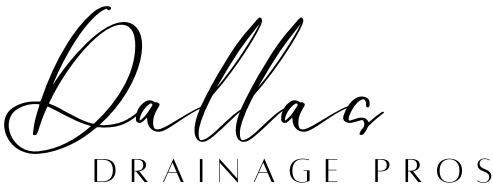Specializing in Stormwater Drainage Solutions
Basement Foundation Structure Debate: What is best for Waterproofing and Drainage
Eccentric versus Concentric - Foundation and Wall Support Beams
We’ve received a lot of positive responses to this video, but also some push-back on a couple of points. We wanted to take moment to elaborate more on these issues to help clarify the statements made and design methods seen in this video, in order to address the structural questions that were raised.
The first question refers to about the 2 minute mark, when the statement is made that the ledge serves no purpose. This was contested by several people, and to their credit, they are correct, in that it serves a purpose for the way in which this basement was engineered. HOWEVER, it could have been engineered differently, to avoid having this ledge. The location of the beam as it relates to the basement wall (in this structural design) not only creates a seam but also an inward-facing corner, right at or near the subfloor. In response to this question, we put together this article, so that we could dive into this a little deeper:
First, the Correct Structural Definitions:
- Concentric Footing (Beam) The wall or column is centered directly over the footing — load is evenly distributed down the middle of the beam. There’s equal footing projection on both sides.
- Eccentric Footing (Beam) The wall sits off-center, usually flush with one edge of the footing. This means more footing extends to one side than the other — often used for basement exterior walls, where soil only bears on the outside face.
So in basement design:
- Eccentric beams are more supported along exterior basement walls because the interior side is open space, and the outer edge carries the soil load.
- Concentric beams are more necessary for interior or exterior, grade-level and load-bearing walls.
From a Drainage & Waterproofing Standpoint in Regard to Basements:
1. Eccentric Beam Benefits:
- Allows the foundation wall to align flush with the outer face of the beam, so the waterproofing system can continue straight down the wall with no ledge interruption.
- The French drain and gravel backfill can be installed directly along the exterior side of the footing, which is ideal for collecting groundwater.
- Hydrostatic pressure from the surrounding soil pushes evenly down the waterproofed face of the wall and into the drain zone. —Reduces the risk of trapped moisture at the wall-footing joint when properly detailed with liquid-applied elastomeric membrane and dimple board.
Drawbacks:
- Structurally, eccentric loading causes bending stress in the footing — it must be sized and reinforced properly.
2. Concentric Beam Benefits:
- Structurally balanced and strong — no bending moment from offset loads.
- Simplifies grade beam placement for slab-on-grade construction.
Drawbacks:
- Poor fit for exterior waterproofing. Because the wall sits centered, the outer face of the footing projects outward, creating a ledge that collects water and sediment against the wall.
- Waterproofing must make a hard 90° turn down over the footing projection — a high-risk location for membrane failure or air pockets.
In short: Concentric footings are not ideal for basement walls where waterproofing is critical — they create interruptions in the drainage path and more failure points. Additionally, from a load bearing perspective, a basement (retaining) wall’s greatest enemy is exterior hydrostatic pressure, so reducing that is most critical (and drainage and waterproofing are how this is achieved). If managed properly, the surrounding soil around a basement actually acts as a support against outward leaning, further reducing the need for exterior beam placement.
Structural Question Raised in Regard to Drain Placement:
The second question raised was in regard to the placement of the French drain system (specifically the depth and distance), relative to the support beam. Every location requires individual evaluation of soil conditions to confirm this, but at this property (as well as much of the Dallas area), the basement foundation beam sits on caliche bedrock. Because of this, there is little or no risk of the “soil” shifting, since it’s a solid rock.
Considerations for either foundation beam designs:
- Waterproofing should extend to the bottom of the footing, or else water can still migrate underneath it and wick upward through capillary action.
- Hydrostatic pressure can build beneath the footing, eventually forcing seepage up at the wall-floor joint. Therefore:
- Additional excavation is needed to reach below the beam (6″ or more), so the French drain can prevent water from building up under the beam as well as intercept water before it rises into the slab plane.
Best Practice for Added Structural Support:
- Install using SDR35-rated, perforated pipe, surrounded by 1–2″ clean crushed rock (with jagged, not smooth, edges), all wrapped in 4 oz non-woven geo-textile fabric.
- Extend the liquid membrane and dimple board down past the beam to tie into that drain layer — a continuous, belt-and-suspenders waterproofing approach.
The Dallas Drainage Pros Recommendation
For Dallas-area basements (clay soils over caliche), eccentric foundation beams are preferred for exterior basement walls, because they:
- Allow the waterproofing and drainage system to run straight down the wall to the drain zone.
- Simplify the tie-in between the elastomeric membrane, dimple board, and French drain system.
- Reduce hydrostatic pressure under the footing by enabling sub-beam drainage.
If a concentric beam is already in place or required by the engineer:
- Add a 45° concrete chamfer at the wall-footing joint.
- Extend the waterproofing membrane continuously over the ledge and down the footing face.
- Install the footer drain below the footing bottom to ensure full water relief under the beam.
